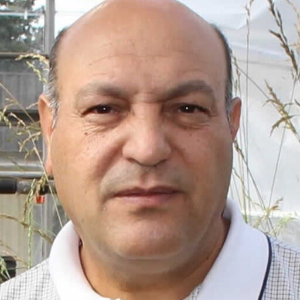Title : Breeding for climate change: Dissecting key adaptation traits in Medicago sativa through QTL mapping
Abstract:
With the erratic changes in weather patterns, development of adapted cultivars is becoming a challenge to breeders because of the pseudo-GXE. This implies a clear understanding of key adaptation traits in order to package as many as possible in a cultivar for broad adaptation. This presentation will focus on understanding the genetic basis of cold tolerance and seasonal dormancy in the perennial Medicago sativa (alfalfa) and the association between the two traits, using genotyping by sequencing of a bi-parental population. Developing non-dormant winter hardy alfalfa cultivars allows for extending the production season that would benefit growers and contribute to economic sustainability. QTL analysis was conducted in a pseudo testcross F1 bi-parental mapping population developed by crossing two cultivars contrasting in fall dormancy (3010 with FD = 2, and CW1010 with FD=10). The mapping population along with the two parents, and standard checks were evaluated in three replications at two locations (Athens and Blairsville, GA). Fall dormancy (FD) was measured as plant regrowth height 28 days after clipping on 21st September and in midwinter to confirm the dormancy level of the segregating genotypes. FD levels were assigned based on a regression equation derived from check cultivars. Cold tolerance and freezing sensitivity of the segregating population was evaluated using indoor screening in a cold chamber at -8?. Frost damage in the field was scored visually from 1-5, with higher numbers indicating more damage. The mapping population was genotyped by using Genotyping-by-sequencing (GBS). The GBS library was constructed using a single digestion with ApeKI enzyme followed by annealing of adapters and amplification. The 96-multiplexed library sequenced at the Georgia Genomics Facility on an Illumina NextSeq PE75 High Output Flow Cell platform. Out of 2032 million raw reads received from sequencing, 1008 million paired reads were usable. The sequence data was processed with the Tassel Uneak pipeline using the R1 reads of the pair-end data. The loci that were present in at least 80% of the total population were considered for the genotyping. Single dose alleles were used for constructing the parental genetic maps resulting in maternal map (CW1010) of 645 and a paternal map (3010) of 1028 SNPs mapped into 8 linkage groups. The average density of markers in the CW1010 linkage map was one marker per 1.9 cM and the average density of markers in the female map was one marker per 1.34 cM. The markers were subsequently used for QTL mapping of fall dormancy and cold tolerance, resulting in 13 major QTL and showing a weak correlation between FD and frost damage.



